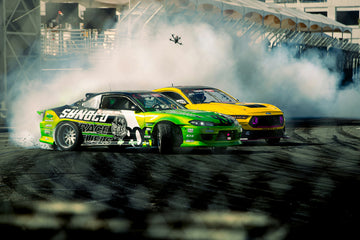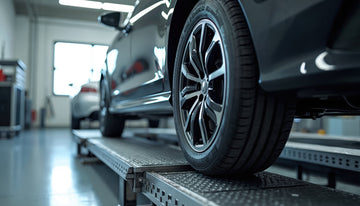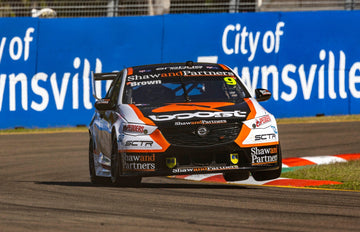Drifting isn’t just about power or style — it’s about control at the edge of traction. The right suspension setup can mean the difference between consistent, predictable slides and an unpredictable mess of oversteer and tyre smoke.
At Supashock, we engineer high-performance coilovers and suspension components trusted in motorsport and defence. This guide breaks down the ideal suspension settings for drifting, whether you're a grassroots drifter or building a pro-spec machine.
Why Suspension Setup Matters for Drifting
Drifting pushes your suspension to its limit — constantly shifting weight, battling grip, and demanding precise control. A properly tuned suspension will:
- Increase predictability in transitions
- Improve steering response and control mid-drift
- Maximise contact patch without excessive roll
-
Keep the car balanced through throttle and brake inputs
Key Suspension Settings for Drifting
1. Camber
-
Front: –3° to –5°
Provides better tyre contact during countersteer. -
Rear: –1° to –2°
Maintains grip but allows for progressive breakaway.
Tip: Too much rear camber reduces grip too quickly and can make the car feel snappy.
2. Caster
-
Front: +6° to +8°
Adds high-speed stability and aggressive self-steer (important in long drifts).
More caster = stronger return-to-center and better steering feel.
3. Toe
-
Front Toe Out: 1–3mm
Improves initial turn-in and helps initiate drift. -
Rear Toe In: 1–2mm
Adds stability under throttle and reduces unwanted snap-oversteer.
4. Ride Height & Corner Balance
- Slight rake (front slightly lower than rear) can improve turn-in.
- Keep ride height low, but don’t slam it — you need suspension travel for weight transfer.
-
Corner balancing is key to even transitions left-to-right.
5. Spring Rates & Damping
-
Stiff front springs (8–12 kg/mm) to reduce body roll and sharpen response.
Softer rear springs (6–10 kg/mm) to allow more weight transfer for throttle control. - Rebound damping should be tuned so the car settles predictably between transitions.
-
Compression damping helps control squat and dive — especially critical on initiation and clutch kicks.
Supashock coilovers offer independent damping adjustability, making them ideal for fine-tuning these parameters trackside.
Bonus: Adjustable Arms & Lock Kits
For serious drifters, we recommend:
- Adjustable camber arms, toe arms, and tension rods to precisely dial in geometry.
-
Steering angle kits (aka lock kits) for greater steering angle and smoother transitions at high angle.
Drift Setup Isn’t One-Size-Fits-All
Every car behaves differently based on:
- Chassis (S-chassis, BMW E-series, 86s, etc.)
- Weight distribution
- Tyres and wheel size
-
Driver preference (grip-heavy vs loose and snappy)
That’s why track testing and driver feedback are essential. Your ideal setup may vary, but the principles remain the same.
Supashock: Built for the Limit
Supashock suspension components are engineered with motorsport DNA. Whether you're building a competitive drift car or dialing in your weekend weapon, our coilover kits offer:
- Precision damping adjustment
- Custom spring rates
- Built-in camber and ride height adjustment
-
Durability under extreme lateral load
Looking to get serious about drifting? Reach out to our team for coilover recommendations, custom setups, and trackside alignment support.
📦 Explore Drift-Ready Coilover Kits → Drift Racing Series 1-Way Adjustable Coilover Kits
Want help tuning your suspension setup?
Contact the Supashock team today— our suspension experience spans decades!




